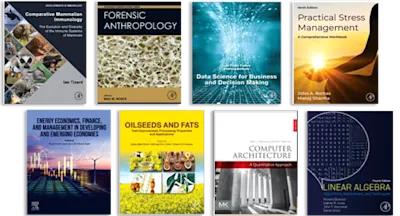
Tcl/Tk For Real Programmers
- 1st Edition - December 21, 1998
- Imprint: Morgan Kaufmann
- Author: Clif Flynt
- Language: English
- Paperback ISBN:9 7 8 - 0 - 1 2 - 2 6 1 2 0 5 - 3
- eBook ISBN:9 7 8 - 0 - 0 8 - 0 5 7 3 2 7 - 4
This book will fill a void in the current Tcl/Tk bookshelf. It is written to the latest version of Tcl/Tk (8.0, perhaps 8.1, depending on Sun's release schedule) and addresses… Read more
Purchase options

This book will fill a void in the current Tcl/Tk bookshelf. It is written to the latest version of Tcl/Tk (8.0, perhaps 8.1, depending on Sun's release schedule) and addresses Tcl/Tk under Windows as well as Unix. It includes discussions on proper coding techniques, instead of just language syntax. Clif Flynt gives readers a very 'hands on' book, with an emphasis towards allowing a reader to pick up the book as needed to find the answer to a question, instead of assuming that it will be read cover to cover.
· A sufficiently detailed overview of the Tcl/Tk language that readers can determine if this is the proper tool for their project.· Enough information that an experienced programmer can start working with the language immediately.· Hints and tips on how to use the language effectively. · Templates that will minimize the new language learning curve.Macintosh, Windows, Unix, LinuxUser requirements would be Windows 3.1 with 32bit DLL, Windows95, Windows NT, Macintosh, Unix, Linux, or Solaris. A 386 or better CPU, 4 Meg Ram, and 4 Meg free disk space. Different packages will have different disk space requirements. A good guess is 2 Meg / package.
AUDIENCE: The experienced programmer who is familiar with the components of a computer programming language. Readers are expected to be familiar with at least one language and possibly several.
- Acknowledgments Preface Tcl/Tk: GUI Programming for a Gooey World Introduction Where to Get More Information
- 1.1 Tcl Overview 1.2 Tcl as a Command Glue Language 1.3 Tcl as a General-Purpose Interpreter 1.4 Tcl as an Extensible Interpreter 1.5 Tcl as an Embeddable Interpreter 1.6 Tcl as a Rapid Development Tool 1.7 GUI-Based Programming 1.8 Shipping Products 1.9 Bottom Line
- 2.1 The tclsh and wish Interpreters 2.2 Using tclsh/wish Interactively 2.3 Evaluating Tcl Script Files 2.4 Bottom Line
- 3.1 Overview of the Basics 3.2 Data Types 3.3 Tcl Commands 3.4 Input/Output in Tcl 3.5 Bottom Line
- 4.1 Pop Client 4.2 Command Evaluation and Substitutions 4.3 Looking for a Needle in a Haystack 4.4 Speed 4.5 Bottom Line
- 5.1 Using the Tcl List 5.2 Using the Associative Array 5.3 New Commands 5.4 Trees in Tcl 5.5 Tree Package Implementation 5.6 Using the Tree Package 5.7 Speed Considerations 5.8 Bottom Line
- 6.1 Arguments to Procedures 6.2 Renaming or Deleting Commands 6.3 Getting Information about Procedures 6.4 Substitution and Evaluation of Strings 6.5 Working with Global and Local Scopes 6.6 Making a Tcl Object 6.7 Bottom Line
- 7.1 Namespaces and Scoping Rules 7.2 Packages 7.3 A Tree Object Package with Namespaces 7.4 Bottom Line
- 8.1 Creating a Widget 8.2 Conventions 8.3 Common Options 8.4 Determining and Setting Options 8.5 The Basic Widgets 8.6 Introducing Widgets: label, button, and entry 8.7 Widget Layout: frame, place, pack, and grid 8.8 Selection Widgets: radiobutton, checkbutton, menu, and listbox 8.8 radiobutton, checkbutton, menu, and listbox 8.9 Scrollbar 8.10 The scale Widget 8.11 New Windows 8.12 Interacting with the Event Loop 8.13 Scheduling the Future: after 8.14 Bottom Line
- 9.1 Overview of the canvas Widget 9.2 Creating a canvas 9.3 Creating Displayable Canvas Items 9.4 More Canvas Widget Subcommands 9.5 The bind and focus Commands 9.6 Creating a Widget 9.7 The image Object 9.8 Bottom Line
- 10.1 Overview of the text Widget 10.2 Creating a text Widget 10.3 Text Widget Subcommands 10.4 HTML Display Package 10.5 Bottom Line
- 11.1 Standard Dialog Widgets 11.2 Megawidget Building Philosophy 11.3 Building a Megawidget Library 11.4 A Scrolling Listbox Megawidget 11.5 Incorporating a Megawidget into a Larger Megawidget 11.6 Making a Modal Megawidget: The grab Command 11.7 A Different Technique for Building Megawidgets 11.8 Bottom Line
- 12.1 Overview 12.2 Building an Extension 12.3 An Example 12.4 Complex Data 12.5 Bottom Line
- 13.1 [incr Tcl] 13.2 Expect 13.3 TclX 13.4 VS Package 13.5 Sybtcl and Oratcl 13.6 BLT 13.7 Graphics Extensions: Img and Dash-Patch 13.8 Bottom Line
- 14.1 Code Formatters 14.2 Code Checkers 14.3 Debugging 14.4 GUI Generators 14.5 Tcl Compilers 14.6 Packaging Tools 14.7 Tcl Extension Generator: SWIG 14.8 Bottom Line
- 15.1 Debugging Techniques 15.2 Tcl as a Glue Language: The exec Command 15.3 Common Mistakes 15.4 Coding Tips and Techniques 15.5 Bottom Line
- A.1 How Do I Find Those Extra Goodies? A.2 Acknowledgments
- B.1 Installing Tcl/Tk on a Macintosh B.2 Installing Tcl/Tk on Windows 95 or Windows NT B.3 Installing Tcl/Tk on Unix/Linux Systems
- C.1 BLT C.2 dash C.3 Expect C.4 Img C.5 incr_tcl C.6 oratcl C.7 plus C.8 sybtcl C.9 TclX
- D.1 Installing the vs Package D.2 TkCon D.3 Frink D.4 Tcl_Cruncher D.5 tclcheck D.6 tclparse D.7 tcl-debug D.8 Tuba D.9 TDebug D.10 SpecTcl D.11 SWIG D.12 megaWidget
- E.1 Accessing the Real World Tcl Chapters E.2 Accessing the Tutorials E.3 TclTutor E.4 Accessing the Extra Documentation Index of Commands Used in Examples Index
- Edition: 1
- Published: December 21, 1998
- Imprint: Morgan Kaufmann
- Language: English
CF
Clif Flynt
Clif Flynt is a professional programmer and has been a Tcl advocate since 1994. He has developed Tcl applications for the e-commerce, factory control, computer-based education, network analysis, games, firewall configuration, systems administration, and more. He has taught Tcl/Tk seminars in colleges and corporations around the world and writes regularly on Tcl/Tk for the developer community.
Affiliations and expertise
CEO, Noumena Corporation, Dexter, Michigan, USA